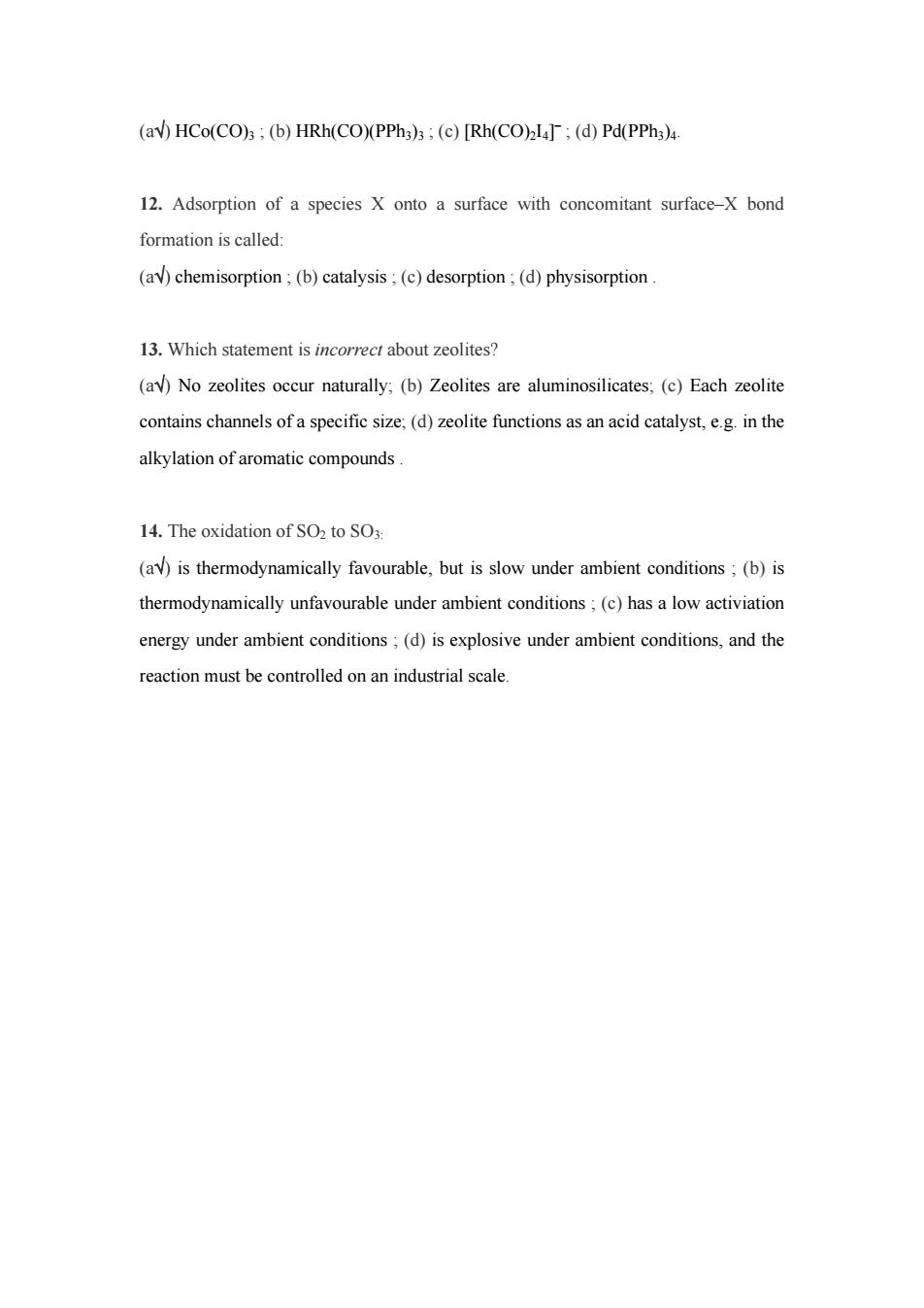正在加载图片...

(av)HCo(CO)3;(b)HRh(CO)(PPh;)3:(c)[Rh(CO)I4];(d)Pd(PPh;)4. 12.Adsorption of a species X onto a surface with concomitant surface-X bond formation is called (av)chemisorption;(b)catalysis;(c)desorption;(d)physisorption 13.Which statement is incorrect about zeolites? (av)No zeolites occur naturally,(b)Zeolites are aluminosilicates:(c)Each zeolite contains channels of a specific size;(d)zeolite functions as an acid catalyst,e.g.in the alkylation of aromatic compounds. 14.The oxidation of SO2 to SO3: (av)is thermodynamically favourable,but is slow under ambient conditions (b)is thermodynamically unfavourable under ambient conditions;(c)has a low activiation energy under ambient conditions;(d)is explosive under ambient conditions,and the reaction must be controlled on an industrial scale.(a√) HCo(CO)3 ; (b) HRh(CO)(PPh3)3 ; (c) [Rh(CO)2I4] – ; (d) Pd(PPh3)4. 12. Adsorption of a species X onto a surface with concomitant surface–X bond formation is called: (a√) chemisorption ; (b) catalysis ; (c) desorption ; (d) physisorption . 13. Which statement is incorrect about zeolites? (a√) No zeolites occur naturally; (b) Zeolites are aluminosilicates; (c) Each zeolite contains channels of a specific size; (d) zeolite functions as an acid catalyst, e.g. in the alkylation of aromatic compounds . 14. The oxidation of SO2 to SO3: (a√) is thermodynamically favourable, but is slow under ambient conditions ; (b) is thermodynamically unfavourable under ambient conditions ; (c) has a low activiation energy under ambient conditions ; (d) is explosive under ambient conditions, and the reaction must be controlled on an industrial scale